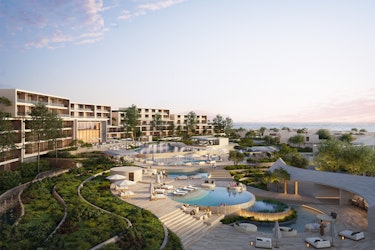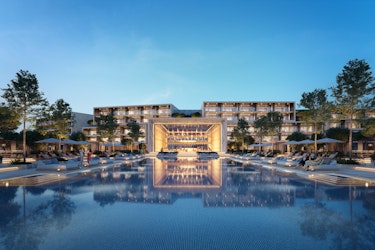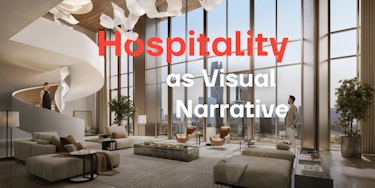As physical and digital realms continue to blur, visual storytelling has become an architectural tool in its own right — especially in the hospitality sector. Long before construction begins, the emotional identity of a space is already being formed in the mind of the viewer. And increasingly, that identity is crafted not by the built object, but by the images that precede it.
Experience Begins Before Arrival
In high-end hospitality, guests rarely arrive unprimed. Their expectations are shaped by a carefully constructed visual language — films, renders, motion sequences — that define not just how a space looks, but how it feels. These materials operate less as documentation and more as emotional blueprints.
Rather than showcasing floorplans or furniture, the goal is to suggest atmosphere: the stillness of morning light, the tactility of natural stone, the rhythm of shadows moving through open corridors. These elements, when layered through precise visual direction, begin to evoke lived-in memories of places that don’t yet exist.

Visualization as Architectural Strategy
Within hospitality developments, visualization is no longer an afterthought. It plays a foundational role in articulating intent. The collaboration between architects, interior designers and visual studios often starts early — sometimes at the concept stage — to ensure that spatial narratives are emotionally legible from the outset.
This shift has reframed the way hospitality projects are communicated. With highlighting amenities or technical features, the focus is on how the environment speaks to the subconscious. Texture, silence, scale, and time of day become central characters in the story.

Site, Story and Specificity
Generic visual tropes no longer resonate. Discerning guests and investors expect a visual experience that reflects the cultural and geographical specificity of place. The most effective narratives are rooted in material context and environmental logic.
In recent projects across southern Europe and the Middle East, the most memorable visual strategies have drawn directly from local topography, indigenous materials, and atmospheric conditions. When architectural visuals embody these nuances, they transcend marketing—they become a form of spatial poetry.

More Than Marketing
For investors, visual storytelling operates as both emotional hook and due diligence. It reflects design clarity, operational coherence, and conceptual alignment. In this context, the visual is a proxy for process — suggesting how well a development team understands its own ambition.
For architects and developers, this elevates the importance of collaboration with content creators who possess both aesthetic and strategic literacy. It’s no longer enough to show what will be built; the question is why it matters — and how it will feel to inhabit.

As immersive formats evolve — AR walkthroughs, cinematic motion, interactive storytelling — the core principle remains the same: architecture is a vessel for experience, and experience is emotional.
In the hospitality space, every room, corridor, or landscape frame is a stage for meaning. And in a global market driven by memory, aspiration and imagination, visual storytelling is no longer supporting architecture. It is part of it.
